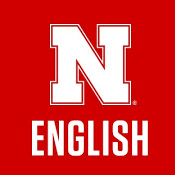English, Department of

Department of English: Faculty Publications
Document Type
Article
Date of this Version
1987
Citation
Spenser Newsletter, XVIII, No. 2 (Spring/ Summer, 1987), 40-43.
Abstract
This book is excellent both for classicists and Spenserians, for the latter not only because Homer is the (direct or indirect) source for many episodes in The Faerie Queene but because the modes of understanding epic which Lamberton explores are crucial to the comprehension of Spenserian allegory. The work continues the tradition of examination of classical myth and allegory begun by Felix Buffiere, Jerome Carcopino, Franz Cumont, and Jean Pepin. Beginning with the early Neo-Pythagorian allegorists, it proceeds to cover Homeric commentary in 'apostolic' and 'post-apostolic' times: that of Philo, Numenius, Clement and Origen in Jewish-Christian tradition; and that of Plotinus, Porphyry, Julian, Sallustus, and Proclus in neo-Platonic tradition. The last section examines Homer's relation to the Middle Ages, showing how he was treated by the Arabs, the Greek church fathers up through pseudo-Dionysius, the Latin fathers including Augustine and Boethius, and late-medieval figures such as the Chartrean Neo-Platonists and Dante. .... This book provides Spenser scholars with plenty to think about if they take it seriously. The whole process of knowing what works and commentaries Spenser's audience knew and how it used them as controls on interpretation is just beginning. Lamberton's view of the use of commentary as pan of the act of creation in mediaeval writing by Boethius, Bernard Sylvestris, and Dante provides the Spenserian with an excellent place to start giving the Spenserian form of the Homeric epic the serious historical-critical reading it deserves.
Included in
Comparative Literature Commons, English Language and Literature Commons, Modern Literature Commons, Reading and Language Commons

